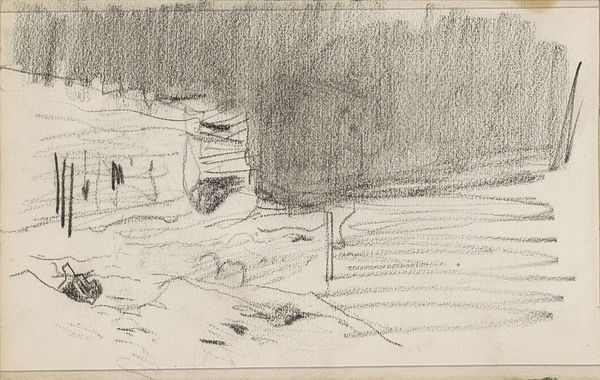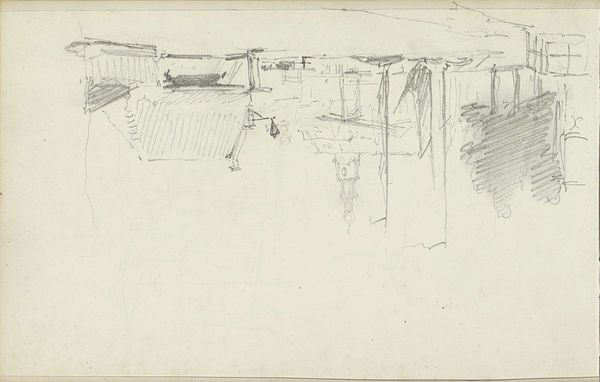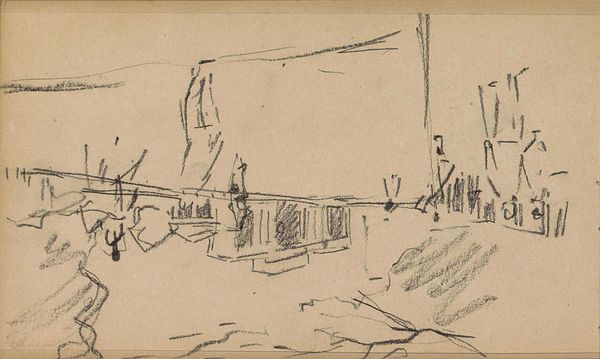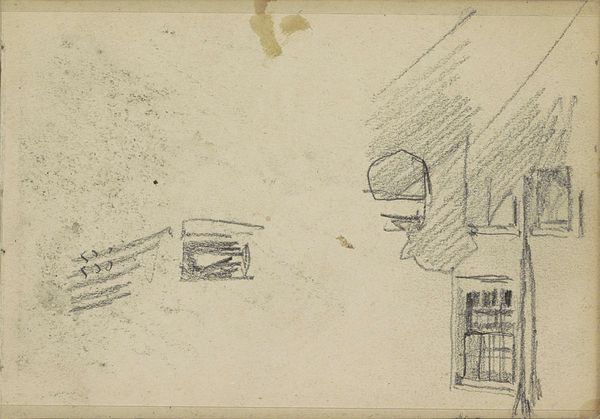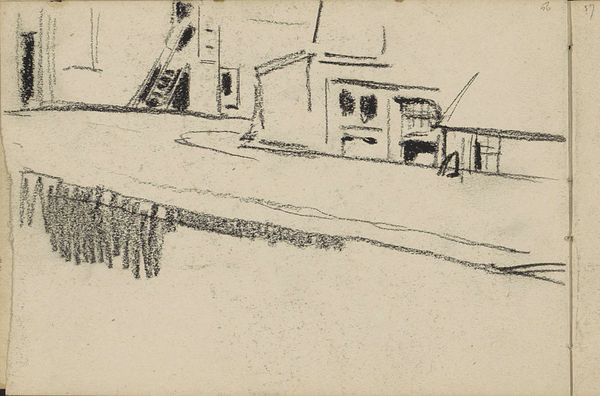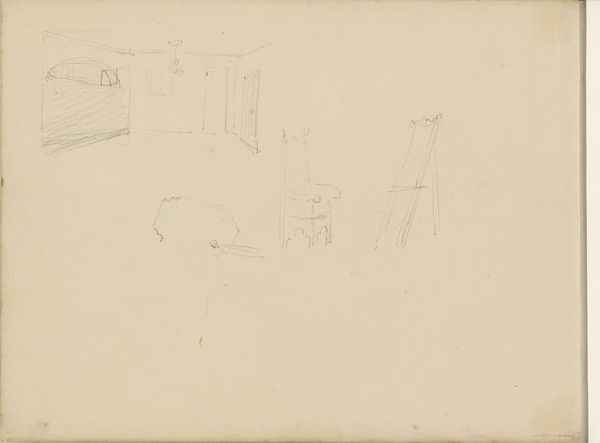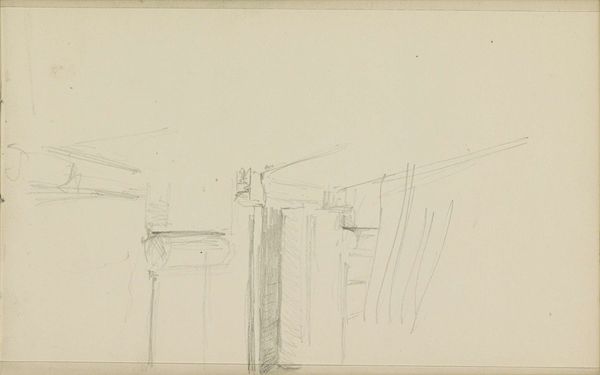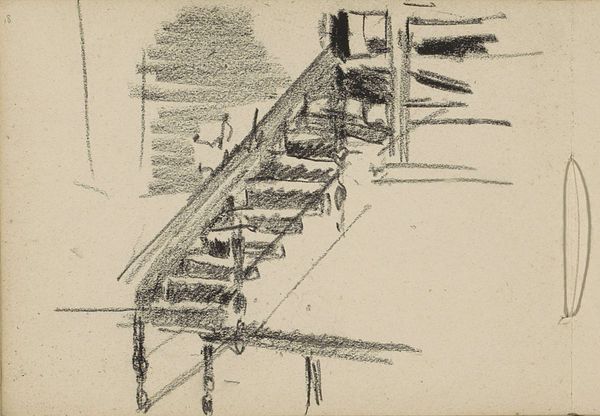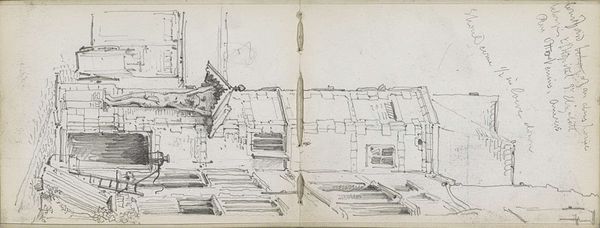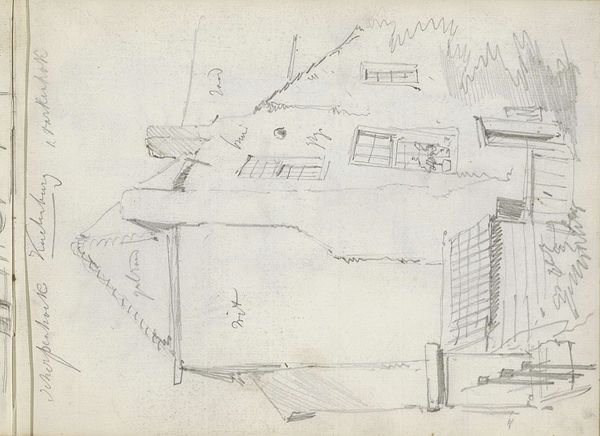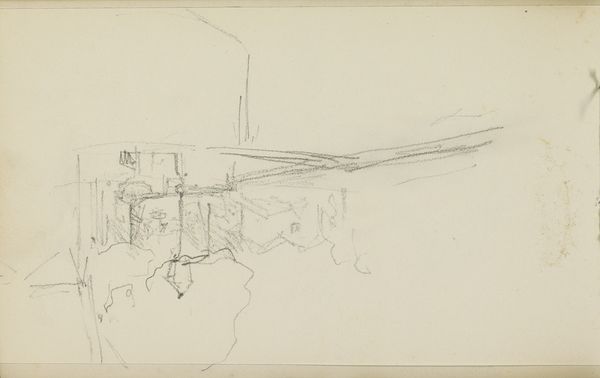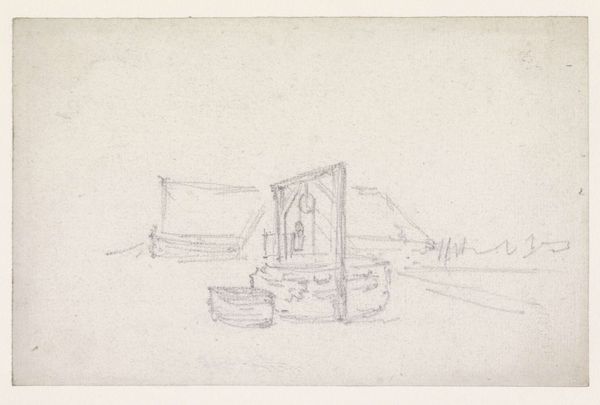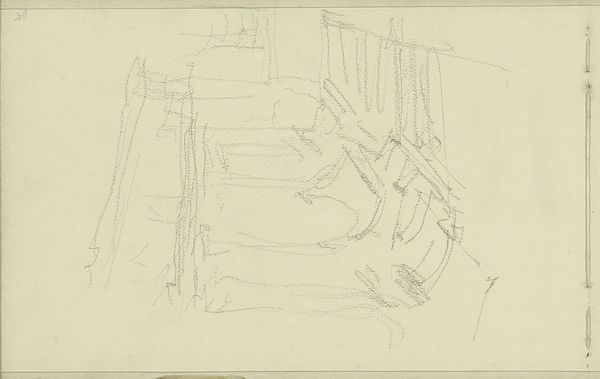
drawing, paper, pencil, architecture
#
architectural sketch
#
drawing
#
amateur sketch
#
light pencil work
#
pencil sketch
#
sketch book
#
incomplete sketchy
#
landscape
#
paper
#
personal sketchbook
#
sketchwork
#
pen-ink sketch
#
pencil
#
architecture
#
initial sketch
Copyright: Rijks Museum: Open Domain
Curator: Here we have George Clausen’s pencil drawing, “Onze Lieve Vrouwekerk, ook wel Kleine Kerk, van Edam,” dating to 1875. It’s a fascinating look into an artist’s process. Editor: It’s so preliminary! Almost ghostly in its lightness. What strikes me most is its raw, almost fragile quality. It speaks to the vulnerability inherent in capturing a place. Curator: Indeed. Note the delicate hatching that builds the form of the church tower. Churches like this were more than just religious spaces; they were often at the heart of social life, providing continuity through changing times. Editor: And Clausen's rapid lines feel very much of their moment—an era of burgeoning industrialization, perhaps attempting to grasp a visual sense of this past, one inevitably on the verge of slipping away. The tower especially feels massive in comparison to the other architecture on display. Curator: The verticality of the tower undoubtedly held symbolic significance. It represents the aspiration towards the divine, an upward reach, common iconography found throughout Europe for hundreds of years. Editor: It makes you think, who had access to these places, to their symbols of hope? These sacred spaces and artistic renderings frequently existed amidst stark social and economic inequality. How were they designed to reinforce—or perhaps challenge—those power dynamics? Curator: That's a good point. The Church, like art itself, could serve as a vehicle for social mobility… or perpetuate the status quo. The rough lines almost serve as a reminder of the work required to attain that spiritual hope or status. Editor: Exactly. It’s a layered image. Despite its unfinished appearance, Clausen’s sketch triggers questions about our relationship with architecture, religion, history, and, of course, representation itself. It's incomplete but, in some ways, feels complete for what it reveals. Curator: I agree; it reveals the complex web of symbols that form our worldviews. Editor: And that initial sketch allows us to interpret how it all starts.
Comments
No comments
Be the first to comment and join the conversation on the ultimate creative platform.
